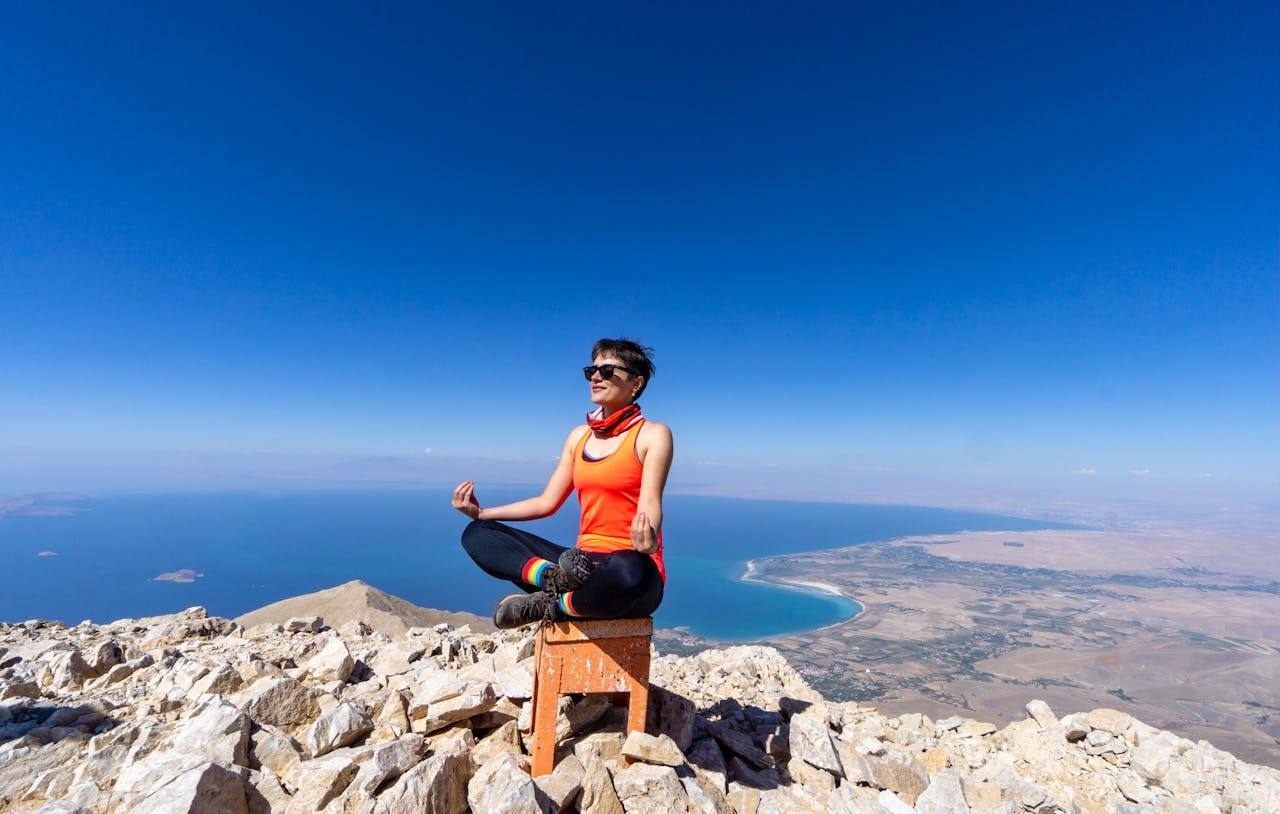Relaxing without getting up

Moving your body is a great way to release stress but there isn’t always time or opportunity to hit the gym or play sport, or you might simply not feel up for anything energetic. Happily, there are some simple, gentle, yet surprisingly effective ways to release stress without even standing up.
Here are some ways to ground yourself, purge tension and return to the okayness of the present moment without so much as standing up.
Kum Nye
A form of very slow, gentle Tibetan yoga, the phenomenally slow and deliberately relaxed movements can calm the most persistently anxious mind by forcing you to pay attention to just how slowly you are moving and what is arising in the present moment, as opposed to letting your mind revisit the past or race ahead into an imagined future. As you persist over nine glacially slow repetitions of your chosen movement, you may find your eyes watering, your nose running, or you might have the uncontrollable desire to yawn. All are signs that you have relaxed from a state of being geared up to take on the excitements and threats of the world into the recovery, rest and digest state. Do this every day and notice how calmness can become a habit. Kum Nye is great for a few minutes just before bed, should you ever find your mind racing, bringing your mind from a sprint down to a crawl. If you become a massive fan, you can even attend an affordable online kum nye retreat from the comfort of your room offered by the Karuna Institute.
I wanted to include a video showing some basic exercises, but since everything on YouTube looks remarkably advanced, here’s a written description of my favourite exercise of arm circling:
Sit with your hands in your lap, palms up, left hand resting on the right. Notice your breath slowing as you very slowly lift both hands to chest height, right hand floating above the left. As they reach chest height, turn both hands to face outwards from the body. Carry on lifting them until you are stretching up as far as you can and then very slowly reach upwards and outwards to the sides to draw a huge circle with your outstretched fingertips. Eventually your hands will end up by your sides and can return to your lap. Repeat 2-8 more times. Try to move as slowly as you can to begin with. As you continue, slow down and make each repetition much slower than the one before. Aim for profound slowness. This is one race that the proverbial tortoise always wins!
Chair yoga
A series of simple seated stretches targeting all the major muscle groups from the comfort of your desk. This video shows a basic routine, but feel free to add in any stretches you feel would benefit you. Just remember to be very gentle with yourself if you have been sat for a long time. Even fit young people can stiffen up remarkably when tense and focused.
This is just one of many video guides available on YouTube. You don’t need to spend a full 15 minutes stretching unless you need a full body workout – just 2-3 minutes can release pockets of tension and reset your concentration.
Staring into space
An optician once told me that everyone working with a screen should rest their eyes by refocusing on a distant object and blinking 20 times over 20 seconds every 20 minutes. They called it the 20:20:20 rule. I can’t say I manage it consistently but it is a remarkably effective way to rest and reset the tired, dry eyes that result from computer work in particular.

Squaring the circle
Yogis sometimes talk about box breathing or square breathing. This simple method involves:
- breathing in for a count of four
- holding the inbreath for a count of four
- breathing out for a count of four
- waiting until the count of four before breathing in again.
This regular breathing pattern helps calm the nervous system. You might find you naturally slow down, counting each side of the square more slowly as time inside and around you slows down and you feel increasingly expansive. Time goes faster when we feel happy and more slowly when we pay close attention. Realising this, slowing down your world becomes a simple game of mind over matter.
There are even videos online that aim to help you settle into a routine, like this one:
Of course, if you have time to stand up and wander outside, Ravelin Park is lovely at this time of year. Just remember to take all your valuables with you and pack away your things if you are taking an extended break, so someone else can use your study space while you are away. Lastly, if you find you are still struggling to relax or you have a lot on your mind, help is always on hand: you can always chat with Chaplaincy or the Student Wellbeing Service.
Are there any more ways to relax from your favourite chair that I’ve not mentioned? Tell us your favourites in the comments below!




Leave a Comment (note: all comments are moderated)